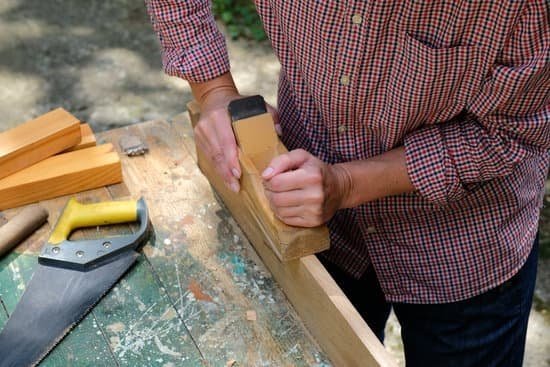Isopropyl alcohol, commonly known as rubbing alcohol, is a versatile solvent that is widely used for various cleaning and sterilizing purposes. In this article, we will explore the use of isopropyl alcohol on woodwork, discussing its properties, advantages, disadvantages, safety precautions, alternative cleaning solutions, and tips for usage. The focus will be on determining whether isopropyl alcohol is safe to use on wood surfaces and the potential effects it may have.
Isopropyl alcohol is commonly used for cleaning and disinfecting surfaces due to its ability to dissolve oils and remove dirt and grime effectively. Given its widespread use, many individuals may wonder if it is safe to use on woodwork without causing any damage or undesirable effects. This article aims to provide a comprehensive analysis of the use of isopropyl alcohol on wood surfaces, addressing both its benefits and potential drawbacks.
As we delve into the properties of isopropyl alcohol and its impact on woodwork, readers will gain a better understanding of how this solvent functions and whether it is suitable for their specific cleaning needs. Additionally, alternative cleaning solutions for woodwork will be explored to provide readers with a range of options for maintaining their wood surfaces while considering safety and environmental concerns.
Properties of Isopropyl Alcohol
Isopropyl alcohol, also known as rubbing alcohol, is a common household chemical that is widely used for various purposes. It is a colorless, flammable chemical compound with a strong odor. Isopropyl alcohol is known for its evaporative nature, which means it quickly turns from a liquid into a vapor at room temperature. This property makes it an effective solvent for cleaning and disinfecting purposes.
One of the key properties of isopropyl alcohol is its effectiveness as a solvent. It has the ability to dissolve a wide range of non-polar compounds, making it an ideal choice for removing dirt, grease, and grime from wood surfaces. Additionally, its quick-drying nature makes it convenient for use on woodwork, as it evaporates rapidly without leaving behind any residue.
However, despite its effectiveness as a solvent, there are certain disadvantages to using isopropyl alcohol on woodwork. It can potentially damage certain wood finishes and there is a risk of discoloration or dulling of the wood surface when not used properly. Furthermore, the fumes emitted by isopropyl alcohol can be harmful if proper ventilation measures are not taken in the workspace.
| Property | Description |
|---|---|
| Evaporative Nature | Isopropyl alcohol quickly turns from liquid to vapor at room temperature. |
| Effective Solvent | It has the ability to dissolve non-polar compounds and remove dirt and grime from wood surfaces. |
| Quick-Drying | It evaporates rapidly without leaving behind any residue. |
Advantages of Using Isopropyl Alcohol on Woodwork
Isopropyl alcohol, also known as rubbing alcohol, is a versatile solvent commonly used for cleaning and disinfecting. When it comes to woodwork, isopropyl alcohol offers several advantages for maintaining the beauty and luster of wooden surfaces.
- Its ability to remove dirt and grime: Isopropyl alcohol is effective in breaking down and removing dirt, grease, and other residues from wood surfaces without causing damage or discoloration.
- Quick drying nature: One of the key benefits of using isopropyl alcohol on woodwork is its fast evaporation rate. This means that it can be used to clean wooden surfaces without leaving behind any lingering moisture that could potentially lead to warping or damage.
- Compatibility with various finishes: Isopropyl alcohol can be safely used on a wide range of wood finishes, including varnish, shellac, lacquer, and polyurethane. It effectively cleans these surfaces without compromising their integrity or appearance.
Incorporating isopropyl alcohol into your woodwork maintenance routine can help keep your wooden furniture, floors, and other surfaces looking clean and well-maintained. However, it’s important to be aware of the potential disadvantages and take proper safety precautions when using this solvent on woodwork.
Disadvantages of Using Isopropyl Alcohol on Woodwork
Isopropyl alcohol, commonly known as rubbing alcohol, is a versatile cleaning agent that is used for a variety of applications. However, when it comes to using isopropyl alcohol on woodwork, there are some distinct disadvantages to be aware of. While it can be an effective cleaner in certain situations, its use on wood surfaces can present some potential risks and drawbacks.
Potential Damage to Certain Wood Finishes
One of the main disadvantages of using isopropyl alcohol on woodwork is its potential to cause damage to certain wood finishes. This is particularly true for delicate or sensitive finishes such as shellac or lacquer. The harsh nature of isopropyl alcohol can strip away these finishes, leading to irreparable damage to the surface of the wood.
Risk of Discoloration or Dulling of the Wood Surface
Another concern when using isopropyl alcohol on woodwork is the risk of discoloration or dulling of the wood surface. The strong solvent properties of isopropyl alcohol can interact with the natural oils and pigments in the wood, causing unsightly changes in color or a loss of luster. This can diminish the overall aesthetic appeal of the woodwork and require additional remedial treatments.
Harmful Fumes and Ventilation Concerns
In addition to potential damage to the wood surfaces themselves, another drawback of using isopropyl alcohol on woodwork relates to safety concerns. The fumes emitted by isopropyl alcohol can be harmful if inhaled in large quantities, and prolonged exposure can have negative health effects. Proper ventilation in the workspace, as well as the use of protective gear such as gloves and goggles, is essential when working with this substance.
Considering these disadvantages, it’s important for individuals to carefully weigh the pros and cons before deciding whether to use isopropyl alcohol on their woodwork. Alternative cleaning solutions may be more suitable for maintaining and preserving delicate or valuable wooden surfaces.
Safety Precautions When Using Isopropyl Alcohol on Woodwork
Isopropyl alcohol is a commonly used solvent and cleaning agent, but it is important to exercise caution when using it on woodwork. While it can effectively remove dirt and grime from wood surfaces, there are certain safety precautions that need to be taken into consideration to prevent any potential damage or hazards.
Proper ventilation in the workspace is crucial when using isopropyl alcohol on woodwork. The fumes emitted during the application of the alcohol can be harmful if inhaled in large quantities, so working in a well-ventilated area is essential. This can help minimize the inhalation of fumes and reduce the risk of any associated health issues.
In addition to ensuring proper ventilation, it is also advisable to use protective gear such as gloves and goggles when handling isopropyl alcohol. This can help protect the skin and eyes from any potential contact with the alcohol, reducing the risk of irritation or injury. It’s also important to keep the work area free from any open flames or sources of ignition, as isopropyl alcohol is highly flammable.
| Precaution | Recommendation |
|---|---|
| Ventilation | Work in a well-ventilated area to minimize inhalation of fumes |
| Protective Gear | Use gloves and goggles to protect skin and eyes from contact with the alcohol |
| Open Flames | Avoid working near open flames or sources of ignition due to the flammability of isopropyl alcohol |
Alternative Cleaning Solutions for Woodwork
When it comes to cleaning and maintaining woodwork, there are alternative solutions that can be used instead of isopropyl alcohol. These alternatives not only provide effective cleaning but also reduce the risk of damaging the wood surface or harming the environment. Here are some alternative cleaning solutions for woodwork:
- Vinegar and Water Mixture: A mixture of white vinegar and water can be an effective natural cleaner for wood surfaces. The acidity of vinegar helps to break down dirt and grime while being safe for most wood finishes.
- Lemon Oil: Lemon oil is a natural, eco-friendly solution for polishing and conditioning wood surfaces. It not only cleans but also adds a lustrous shine to the woodwork.
- Commercial Wood Cleaners: There are specific wood cleaners available in the market that are formulated to clean and protect wood surfaces without causing any damage. These cleaners are designed to remove dirt, grease, and fingerprints while nourishing the wood.
By using these alternative cleaning solutions, one can ensure that their woodwork remains clean and well-maintained without the potential risks associated with using isopropyl alcohol.
It is important to consider the specific needs of the wood surface when choosing a cleaning solution. For example, unfinished or untreated wood may require a gentler cleaner compared to varnished or painted surfaces. Additionally, performing a spot test on a small, inconspicuous area is recommended to ensure that the chosen cleaning solution does not cause any adverse effects on the wood.
Ultimately, opting for alternative cleaning solutions for woodwork provides a safer and more sustainable approach to maintaining wooden surfaces while avoiding potential risks associated with using isopropyl alcohol.
Tips for Using Isopropyl Alcohol on Woodwork
Proper Application Techniques
When using isopropyl alcohol on woodwork, it’s essential to apply it properly to avoid any potential damage. Begin by diluting the isopropyl alcohol solution with water as recommended by the manufacturer. Using a clean, soft cloth, gently wipe the wood surface in a circular motion to remove dirt and grime. It’s important not to oversaturate the wood and to avoid leaving any excess liquid on the surface.
Testing on a Small, Inconspicuous Area First
Before applying isopropyl alcohol to an entire wood surface, it’s a good practice to test it on a small, inconspicuous area first. This will help you assess how the wood reacts to the solution and whether there are any adverse effects such as discoloration or damage to the finish. By conducting this test, you can prevent potential harm to the entire woodwork.
Following Manufacturer’s Recommendations for Dilution and Usage
Manufacturers often provide specific guidelines for diluting isopropyl alcohol and its proper usage on different surfaces, including wood. It’s crucial to carefully follow these recommendations to ensure that you are using the product safely and effectively. By adhering to the manufacturer’s instructions, you can minimize any risks of damage or negative outcomes when using isopropyl alcohol on woodwork.
By employing these tips for using isopropyl alcohol on woodwork, individuals can minimize potential risks and achieve effective cleaning results without causing harm to their wood surfaces.
Conclusion
In conclusion, the use of isopropyl alcohol on woodwork has both its advantages and disadvantages. While it is effective in removing dirt and grime, its quick-drying nature, and compatibility with various finishes make it a popular choice for cleaning and maintaining wood surfaces. However, it is important to note that isopropyl alcohol can potentially damage certain wood finishes, cause discoloration or dulling of the wood surface, and emit harmful fumes that require proper ventilation.
Safety precautions when using isopropyl alcohol on woodwork cannot be emphasized enough. Proper ventilation in the workspace, along with the use of protective gear such as gloves and goggles, is essential to minimize any risks associated with its usage. Additionally, keeping the area well-ventilated and free from any open flames is crucial for a safe working environment.
Considering the potential risks associated with using isopropyl alcohol on woodwork, it may be wise to explore alternative cleaning solutions for maintaining wood surfaces. Natural and eco-friendly alternatives as well as specific wood cleaners and polishers offer effective options that minimize potential damage to the wood while providing optimal cleaning results. Ultimately, it is important to weigh the pros and cons of using isopropyl alcohol on woodwork and carefully consider safety precautions before making a decision on its usage.

Hi everyone! I’m a woodworker and blogger, and this is my woodworking blog. In my blog, I share tips and tricks for woodworkers of all skill levels, as well as project ideas that you can try yourself.





